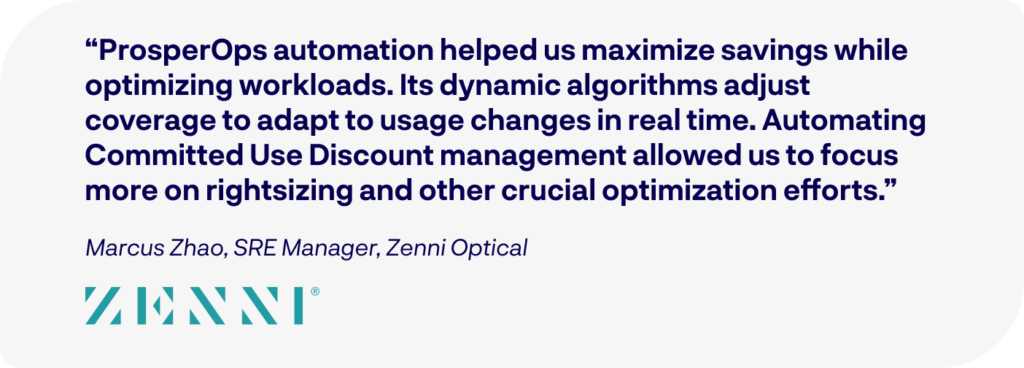Cloud computing is expensive. 27% of all cloud spend is estimated to be waste, according to the 2024 Flexera State of Cloud Report. This equates to over $60B of waste! Six years ago, ProsperOps was founded to help address rising cloud costs for cloud-native businesses. Our first product, Autonomous Discount Management for AWS Compute, does exactly that and now customers trust us to manage commitments covering over $2.5 billion in annual AWS usage.
Our customers love saving money, and since most cloud users are multi-cloud, we set out to expand our platform. Today, we announce General Availability for Autonomous Discount Management (ADM) for Google Cloud Compute, which generates optimization outcomes with the same advanced automation that powers ADM for AWS Compute.
Complexities in Google Cloud Create Challenges for Rate Optimization
- Frequent VM upgrade cycles – VM upgrade cycles on Google Cloud are now occurring every 1 to 3 years. Frequent changes add another variable to consider when making commitments for reduced rates.
- Evolving discount instruments – The Google Cloud team is continually updating its discount offerings to be more appealing. Compute Engine Flexible Committed Use Discounts (spend-based Flexible CUDs) were introduced in 2022 and expanded in July 2024 to include GKE Autopilot and Cloud Run.
- Multiple nuances to consider when applying CUDs – Spend-based Flexible CUDs add horizontal flexibility but are limited to 50% of available VMs and apply strictly to vCPU and memory. Resource-based CUDs are available for all VMs, but functionality is limited based on the resource type covered.
- Accounting for SUDs, free tier credits, and other competitive rates – Google offers competitive rates across various VMs and often incentivizes certain discount instruments. It’s important to weigh each VM’s rate and understand additional rates in your environment, including whether Sustained Use Discounts (SUDs) are applicable.
Our Enhanced Offering Based on Customer Feedback
We launched in Early Access in February 2024. Since then, we’ve gained invaluable insights from customers and enhanced our offering to address their feedback with a number of new features including:
- 1-year to 3-year resource-based CUD upgrades
- Support for our newly launched Commitment Lock-In Risk (CLR) metric
- Rapid adoption of Google’s expanded support for spend-based Flexible CUDs for GKE Autopilot and Cloud Run
- Solidifying many aspects of our telemetry ingestion, algorithms, and execution engine based on serving Google Cloud customers in production, and more
We are now ready to open up our platform broadly to any Google Cloud customer. ProsperOps’ advanced algorithms manage a customized portfolio of commitments leveraging spend-based Flexible CUDs and resource-based CUDs, for 1- and 3-year terms, while taking into account custom pricing and other rates from SUDs, free tier credits, etc. This allows you to:
- Achieve the highest Effective Savings Rate (ESR)
- Reduce CLR with adaptive commitments that fit your environment needs
- Save time and focus on other critical FinOps priorities
Feedback from our customers has been overwhelmingly positive. They’ve experienced increases in savings, surpassing what manual efforts and alternative solutions can achieve. By automating the time-consuming process of managing various CUDs, we’ve enabled them to focus on strategic initiatives that propel their businesses forward.

Get Started and Prosper On
Sign up for a free, fast Savings Analysis to get started, or meet us in person at our events to get a free demo.
Prosper On! 🖖
Clay Wolcott, Product Manager





